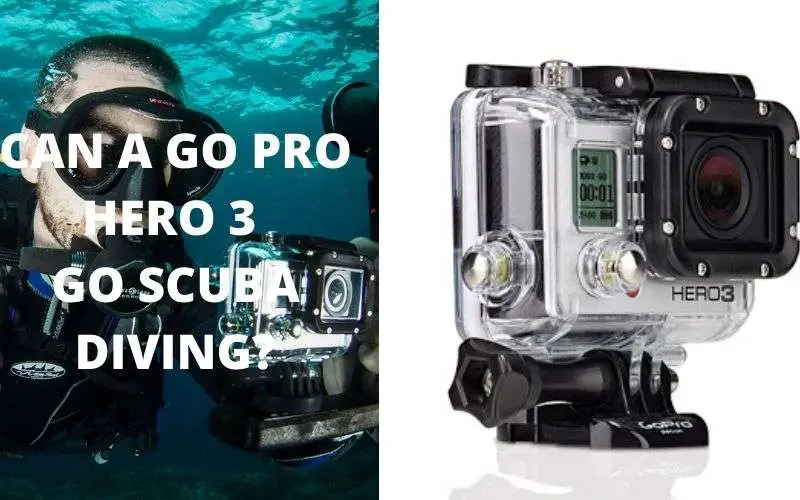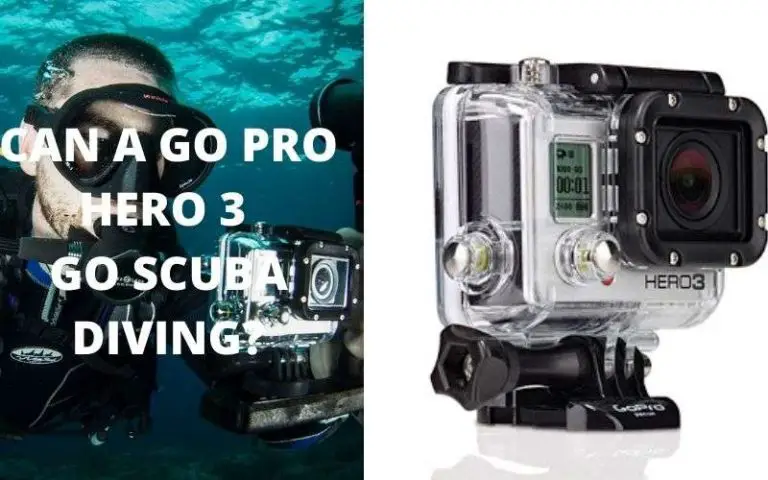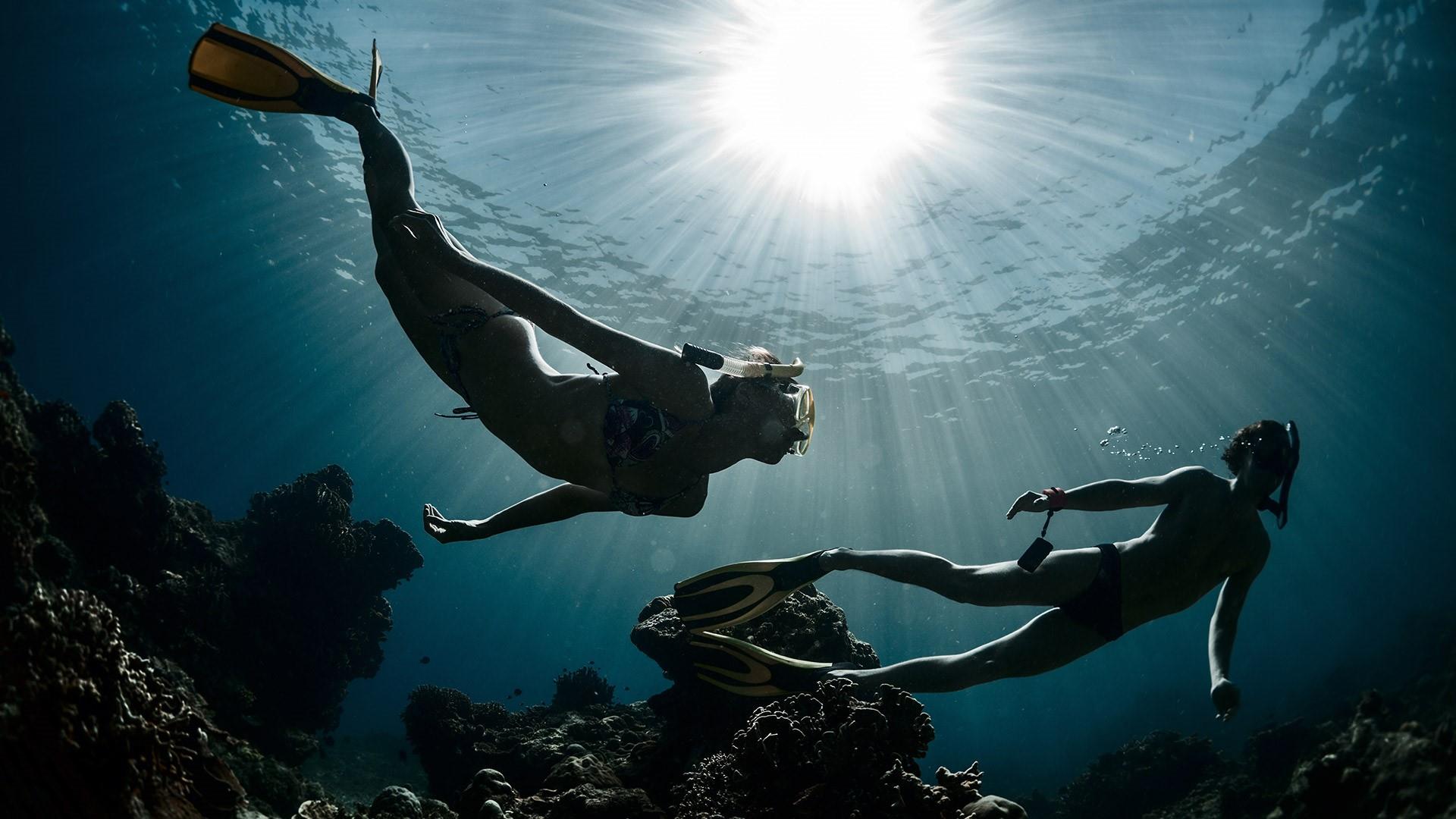
The allure of the underwater world has captivated humans for centuries. Whether you’re a seasoned water enthusiast or a curious beginner, there’s something undeniably mesmerizing about the mysteries that lie beneath the surface.
Snorkeling, skin diving, and freediving are three exhilarating ways to delve into this aquatic wonderland. While they share common equipment, their experiences vary significantly in intensity and skill requirements.
In this comprehensive exploration, we’ll dive deep into the world of underwater exploration and help you discern which option – snorkeling, skin diving, or freediving – aligns best with your interests and abilities.
Comparing Snorkeling, Skin Diving, and Freediving
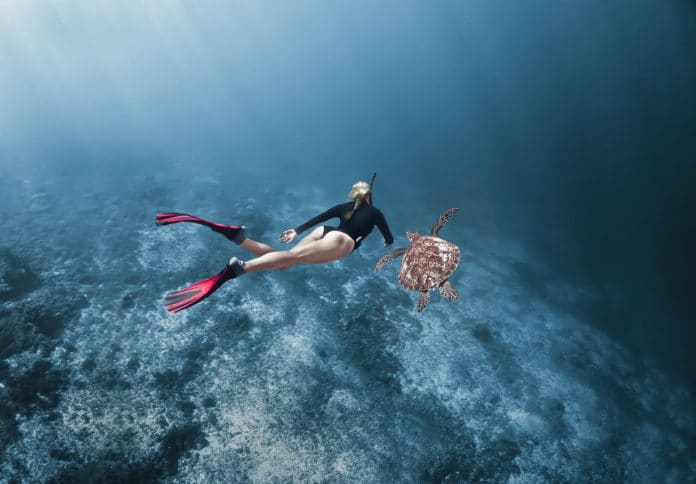
Snorkeling for Beginners
Snorkeling is often seen as the first step into the magical world beneath the waves, especially for newcomers to underwater adventures. It’s like dipping your toes into an aquatic wonderland. This fantastic activity lets you just lay back and gently float on the water’s surface. You breathe through a handy snorkel tube that pokes out of the water, making it easy as pie.
What’s terrific about snorkeling is that it’s incredibly easygoing. You don’t need to be an expert, and you definitely don’t need fancy gear. It’s perfect for beginners who want to take it slow and steady. You get to be a part of the underwater world without any rush or fuss. You can watch fish glide by, marvel at colorful coral reefs, and all of this without needing any heavy-duty training or high-tech gadgets. It’s a bit like a serene voyage into another realm, one that’s as close as the nearest beach.
Skin Diving
If you’re looking to dial up your adventure a notch while holding onto the ease of snorkeling, then skin diving might be your sweet spot. It’s like finding that perfect balance between thrill and comfort. With skin diving, you don’t just stay at the surface – you take a little plunge now and then.
Here’s how it works: You use your trusty snorkel gear, just like in snorkeling. But, and here’s the fun part, you dive beneath the water’s surface too. How? Well, it’s a mix of holding your breath and using some nifty free-diving tricks. This way, you get to explore the underwater wonders up close and personal. It’s like a bridge between the serene world of snorkeling and the more challenging realm of freediving.
Skin diving opens up a world of possibilities for those seeking to broaden their underwater horizons without diving headfirst into the deep end. It’s an adventure with a safety net, and that’s pretty darn appealing for many water enthusiasts.
The Intensity of Freediving
Now, if you’re the kind of thrill-seeker who craves the ultimate underwater challenge, freediving is where you’ll find your heart’s desire. Freediving is like the adrenaline-pumping extreme sport of the underwater world. It’s not for the faint of heart because it’s all about pushing your limits to the max.
Picture this: You take a single deep breath, and with that breath, you dive deep into the ocean, sometimes reaching mind-boggling depths. It’s like exploring another world without the need for heavy scuba gear. But here’s the catch – you’re relying entirely on your body’s capacity to hold its breath, and that’s no small feat.
Freediving isn’t just about physical strength; it’s also a mental game. It demands not only rigorous training but also mental fortitude. You need to understand how your body responds to extreme underwater conditions and how to keep it safe. It’s a journey that takes you to the very edge of your capabilities, where every dive becomes a test of your courage and skill. So, if you’re ready to dive into the deep unknown and embrace the challenges of the ocean’s hidden depths, freediving awaits – but be prepared for a thrilling, intense, and deeply rewarding adventure.
Similarities and Differences
Equipment and Gear
One of the striking similarities between these three aquatic activities is the use of similar equipment: a mask, snorkel, and fins. These fundamental tools facilitate breathing, vision, and mobility underwater, making them indispensable for all three pursuits. However, freedivers may incorporate specialized equipment, such as wetsuits, weight belts, and diving watches, to enhance their performance and safety at greater depths.
Depth and Intensity
The primary difference between snorkeling, skin diving, and freediving lies in the depth and intensity of the experience. Snorkelers remain at the water’s surface, enjoying a serene and accessible view of the underwater world. Skin divers occasionally venture deeper but still maintain a connection to the surface and can return for air whenever needed.
Freedivers, on the other hand, plunge into the depths with a single breath, challenging themselves to explore the ocean’s secrets while battling the physical and mental demands of prolonged submersion.
Skill and Training
Skill and training requirements vary significantly among these aquatic activities. Snorkeling is the most beginner-friendly, requiring minimal instruction. It primarily involves mastering the use of snorkeling equipment, swimming comfortably, and practicing safe water entry and exit techniques. Skin diving introduces breath-holding and diving skills, which can be acquired with moderate training.
In stark contrast, freediving demands rigorous training in breath-holding techniques, equalization methods, and physiological responses to deep dives. Achieving proficiency in freediving takes time, commitment, and expert guidance to ensure safety at extreme depths.
Risks and Safety
While snorkeling and skin diving are generally considered safe, they are not entirely without risks. Common concerns include accidental water inhalation, sunburn, and encounters with marine life. However, these risks are relatively low compared to freediving.
Freediving carries a more substantial risk profile due to the challenges it presents. As divers push their limits, they face potential dangers such as blackout, shallow water blackout, barotrauma, and decompression sickness (the bends). Safety protocols, thorough training, and a deep understanding of one’s body are essential for mitigating these risks in freediving.
Choosing the Right Option for You
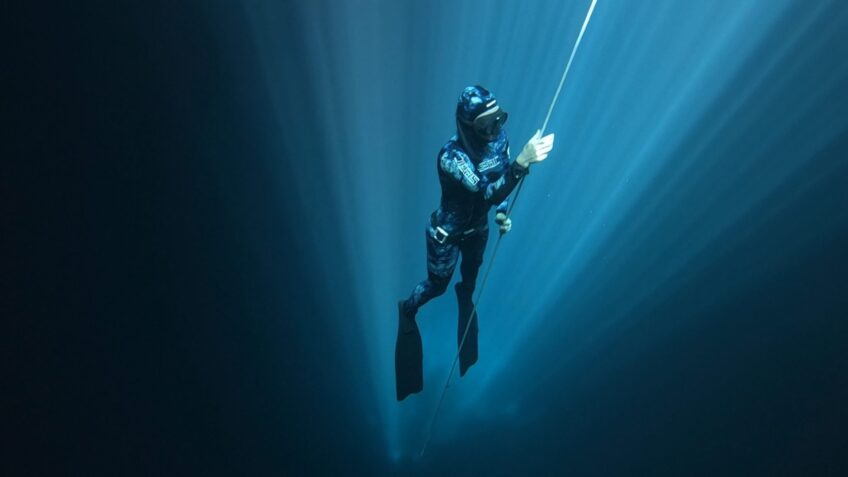
Snorkeling for Leisure
If your primary goal is to leisurely explore the underwater world, soak in the sights, and enjoy a relaxed aquatic experience, snorkeling is the ideal choice. It requires minimal training, making it accessible for beginners and families. Snorkeling is perfect for beach vacations, coral reef excursions, and shallow-water adventures.
Skin Diving – The Middle Ground
Skin diving appeals to individuals who seek a bit more adventure than snorkeling but are not ready to commit to the intensity of freediving. It offers the flexibility to dip below the surface and explore marine life up close while still enjoying the freedom to return to the surface for a breath of air. Skin diving provides an excellent balance between excitement and comfort.
The Thrill of Freediving
Freediving is for those who crave the ultimate aquatic challenge, are committed to extensive training, and are willing to push their physical and mental limits. If the idea of exploring the depths on a single breath, experiencing weightlessness, and communing with the ocean’s most profound mysteries excites you, freediving is the path to pursue.
Conclusion
In the world of underwater exploration, the choice between snorkeling, skin diving, and freediving ultimately hinges on your preferences, skill level, and appetite for adventure. Each activity offers a unique perspective on the mesmerizing underwater world, allowing you to connect with marine life, discover coral reefs, and experience the ocean’s tranquility or intensity.
As you embark on your aquatic journey, remember that safety should always be a top priority. Proper training, equipment, and awareness of your limits are essential, regardless of the option you choose. Whether you’re content with the gentle embrace of snorkeling, crave the middle ground of skin diving, or yearn for the thrill of freediving, the underwater world awaits, ready to unveil its secrets to those who dare to explore its depths.




